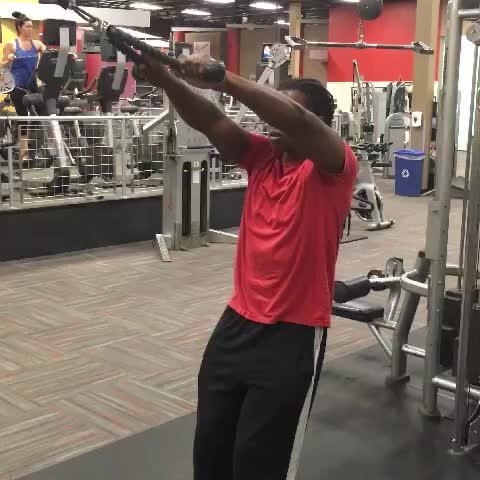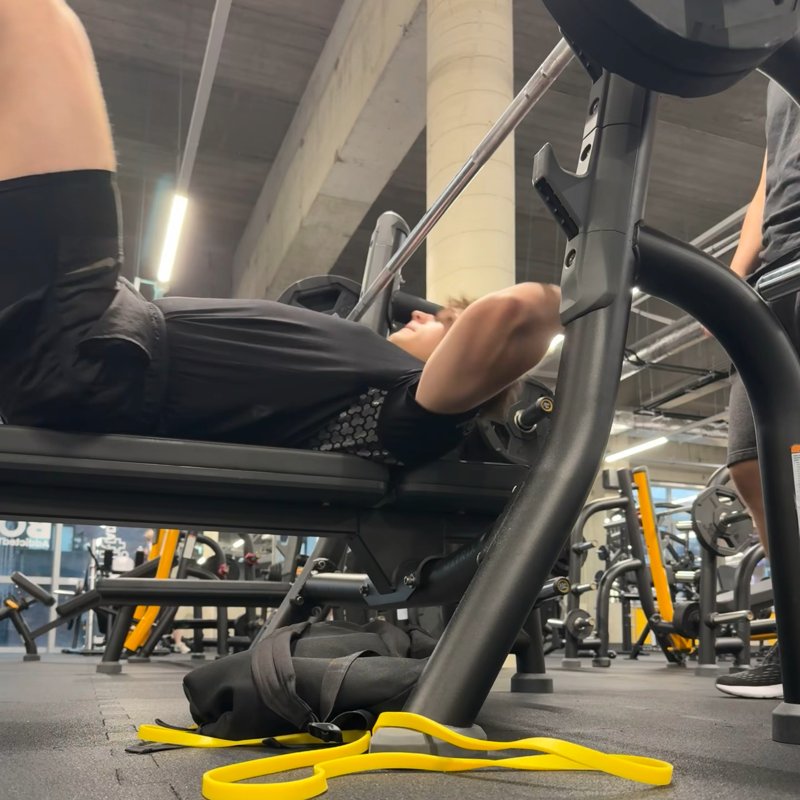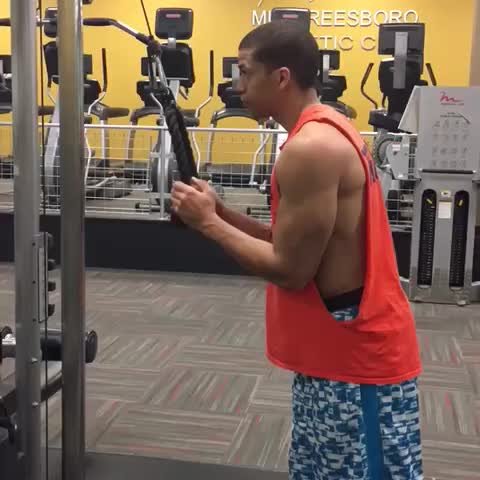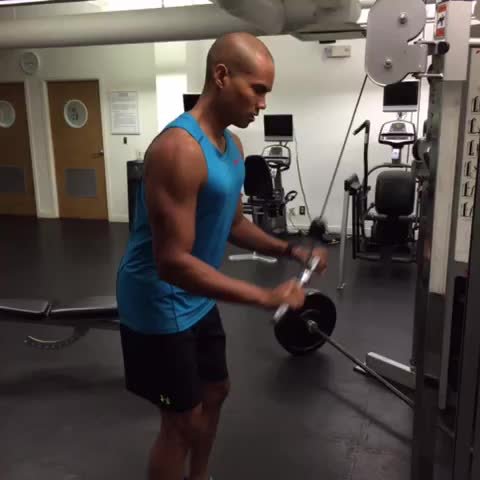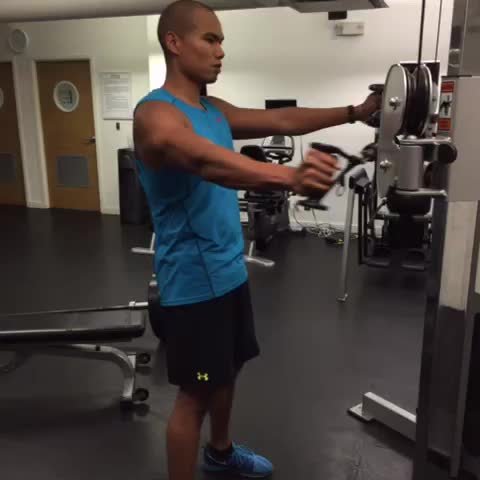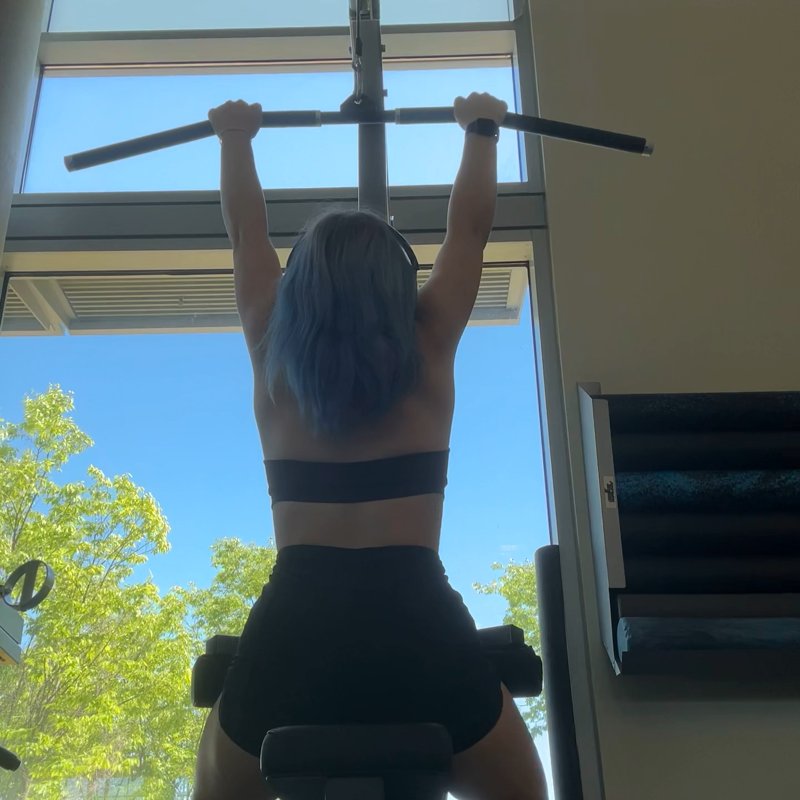Rear Delt Machine: The Ultimate Guide
The Rear Delt Machine (also known as the reverse pec deck) is an isolation exercise that specifically targets the posterior deltoids—the often neglected rear portion of the shoulder muscles—while also engaging the middle trapezius and rhomboids for improved upper back strength and posture.
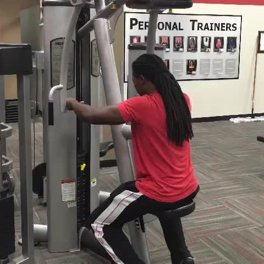
Quick Facts
Key Benefit
Posterior deltoid development and posture improvement
Primary Muscles
Posterior Deltoids, Rhomboids, Traps
Secondary Muscles
Medial Deltoids, Rotator Cuff
Equipment
machine
Difficulty
Beginner
Type
Strength
In This Guide
Ready to master the Rear Delt Machine?
Track your progress, see improvements over time, and build strength consistently.
Download GravitusThe Rear Delt Machine is a specialized piece of equipment designed to isolate and strengthen the posterior deltoids—the often underdeveloped portion of the shoulder muscles. Also known as the reverse pec deck or rear deltoid fly machine, this exercise effectively targets the back of the shoulders in a controlled, supported environment. For many individuals, the posterior deltoids lag in development compared to the front and side deltoids, which receive more stimulation during common pressing exercises. This muscular imbalance can contribute to rounded shoulders, poor posture, and potential shoulder issues over time. The rear delt machine provides a simple, effective way to address this imbalance by isolating the target muscles with a fixed movement path. By stabilizing the torso and eliminating the need to balance free weights, the machine allows for focused effort on the posterior deltoids, helping to create more balanced shoulder development and potentially improving posture and shoulder health. Whether you're a bodybuilder seeking complete shoulder development, an athlete wanting to improve shoulder stability, or someone looking to counteract the effects of prolonged sitting and computer work, the rear delt machine offers valuable benefits.
Benefits of the Rear Delt Machine
The rear delt machine offers several distinct advantages for shoulder health, aesthetics, and overall upper body function.
Balanced Shoulder Development
Directly targets the often neglected posterior deltoids, creating more balanced three-dimensional shoulder development.
Improved Posture
Strengthens the muscles that pull the shoulders back, helping to counteract the forward hunched position common in modern life.
Shoulder Joint Health
Helps balance the strength between the anterior and posterior shoulder muscles, potentially reducing the risk of impingement and other shoulder issues.
Simplified Form
The fixed movement path eliminates stability demands, allowing beginners to learn the movement pattern effectively.
Upper Back Engagement
Simultaneously works the rhomboids and middle trapezius, contributing to improved upper back strength and appearance.
Proper Form & Technique
Starting Position
- Adjust the seat height so that the movement arms align with your shoulder joints.
- Sit facing the machine with your chest against the pad (in the reverse position from how you would use it for chest flies).
- Grasp the handles with a neutral or pronated grip, depending on the machine design.
- Position your arms in front of you with a slight bend in the elbows (about 10-15 degrees).
- Sit tall with your spine neutral, chest up, and shoulders relaxed down away from your ears.
- Ensure your feet are flat on the floor for stability.
Movement
- Inhale and prepare for the movement by engaging your core.
- Exhale as you pull the handles/pads backward by moving your arms out to the sides in a wide arc.
- Focus on squeezing your shoulder blades together and using your rear deltoids to drive the movement.
- Continue the movement until your upper arms are approximately parallel to the floor or slightly behind your torso.
- Hold the contracted position briefly (1-2 seconds), focusing on the squeeze in your rear deltoids.
- Inhale as you slowly return to the starting position with control, maintaining tension throughout the movement.
- Avoid letting the weight stack touch down between repetitions to maintain constant tension.
- Repeat for the desired number of repetitions, maintaining proper form throughout.
Key Form Tips
Elbow Position
Maintain a consistent slight bend in your elbows throughout the movement - don't flex or extend them during the exercise.
Movement Focus
Think about moving your elbows outward and backward rather than focusing on your hands.
Range of Motion
Go back as far as your shoulder mobility allows without straining, typically until arms are in line with or slightly behind your torso.
Weight Selection
Choose a weight that allows proper form - this exercise is most effective with moderate weights and controlled movement.
Head Position
Keep your head neutral, looking forward, not down or hyperextended back.
Muscles Worked
Primary Muscles
- Posterior Deltoids: The rear portion of the three-headed deltoid muscle is the primary target, responsible for horizontal shoulder abduction and external rotation.
- Rhomboids: These muscles between the shoulder blades contract to retract the scapulae during the pulling movement.
- traps: The middle fibers of the trapezius muscle assist in retracting the shoulder blades and stabilizing the scapulae.
Secondary Muscles
- Infraspinatus: This rotator cuff muscle assists with external rotation of the shoulder and helps stabilize the joint during the movement.
- rotator cuff: The rotator cuff muscles that work with the infraspinatus to support shoulder function during the exercise. This includes muscles located on the lateral border of the scapula that assist in the pulling action.
- medial deltoids: The side shoulder muscles assist to a lesser degree during the movement, particularly in the middle portion of the range of motion.
Common Mistakes and How to Fix Them
Using Momentum
Swinging or jerking to move the weight reduces effectiveness and increases injury risk. Fix by slowing down the movement, using a controlled tempo, and potentially reducing the weight to maintain proper form.
Excessive Elbow Flexion
Bending the elbows too much turns the exercise into more of a rowing movement. Keep a consistent slight bend in the elbows (10-15 degrees) throughout the entire range of motion.
Shrugging the Shoulders
Elevating the shoulders toward the ears engages the upper trapezius rather than the targeted posterior deltoids. Keep your shoulders depressed (down away from your ears) throughout the movement.
Insufficient Range of Motion
Not moving the arms far enough back reduces the effectiveness for the rear deltoids. Aim to bring your arms at least in line with your torso, or slightly behind if mobility allows.
Leaning Forward
Pulling away from the chest pad reduces the isolation of the rear deltoids. Keep your chest firmly pressed against the pad throughout the exercise.
Rear Delt Machine Variations
Machine Variations
-

Single-Arm Rear Delt Machine
Performing the movement one arm at a time to address muscle imbalances and increase focus on each side.
-

Alternate Grip Rear Delt Machine
Using a supinated (palms up) grip if the machine allows, which can change the emphasis slightly and may feel more comfortable for some.
-

Pulsing Rear Delt Machine
Performing small pulse movements at the point of maximum contraction to increase time under tension.
Alternative Exercises
-

Bent-Over Dumbbell Rear Delt Fly
A free-weight alternative that requires more stabilization and can be performed without specialized equipment.
-
Cable Rear Delt Fly
Using a cable machine with individual handles to perform the same movement pattern while standing, offering more freedom of movement.
-
Face Pull
A cable exercise that works the rear deltoids along with upper back muscles through a pulling motion toward the face.
Frequently Asked Questions
For optimal posterior deltoid development, 3-4 sets of 10-15 repetitions is generally effective for most people. The rear deltoids contain a higher proportion of slow-twitch muscle fibers, which respond well to higher repetitions with moderate weight. For variety, occasionally incorporate heavier sets of 8-10 repetitions or lighter sets of 15-20 repetitions. The key is to use a weight that allows you to maintain proper form while feeling a strong contraction in the target muscles throughout the set.
This depends on your goals. If posterior deltoid development is a priority due to imbalance or aesthetic preference, perform the rear delt machine earlier in your workout when your energy levels are higher. For general shoulder development, you might perform the exercise after compound pressing movements, which require more overall energy and coordination. Some people find benefit in using the rear delt machine as a pre-activation exercise before overhead pressing, as it can help engage the stabilizing muscles of the shoulder complex.
For many people with shoulder issues related to muscular imbalances (particularly those with overdeveloped anterior deltoids relative to posterior deltoids), the rear delt machine can potentially help reduce discomfort by strengthening the posterior shoulder muscles. This may improve shoulder positioning and function. However, if you're experiencing acute shoulder pain, consult with a healthcare professional before using this or any exercise. For those with existing shoulder conditions, starting with very light weight and perfect form is essential.
Both exercises effectively target the posterior deltoids but with different benefits. The machine version provides a fixed movement path and eliminates stability demands, allowing you to focus completely on the target muscles. This makes it excellent for beginners or those specifically trying to establish a mind-muscle connection with the rear deltoids. Dumbbell rear delt flies require more stabilization and coordination, potentially engaging more auxiliary muscles and offering greater freedom of movement. The free weight version also provides practical benefits like not requiring specialized equipment. Ideally, incorporate both variations into your routine over time.
Video Demonstrations
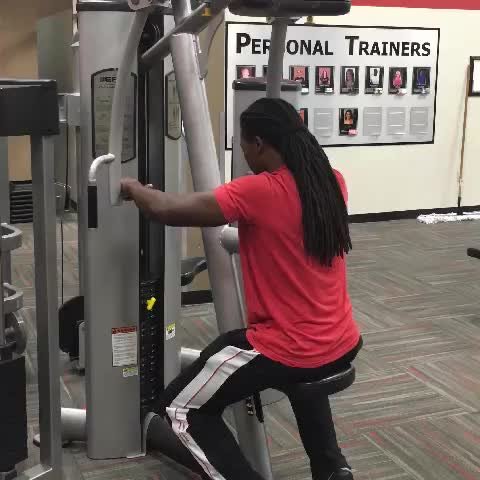
Log in to watch video demonstrations
Login to Watch3 video demonstrations available
Find more video demonstrations in the Gravitus app
Tips from the Community
-

Position your hands slightly higher than shoulder height.
-

Position your chin on the top of the pad and make sure your chest is pressed against the pad for support then pull your shoulders back to feel the squeeze in the top of your back and delts.
Track your progress with Gravitus
Download Gravitus to log your workouts, track your progress, and join a community of fitness enthusiasts.

Helpful Resources
One Rep Max Calculator
Find your one rep max for any exercise without maximal testing. Essential for developing effective strength training programs.
Calculate 1RMWorkout Programs
Follow structured workout programs created by fitness professionals to maximize your strength and muscle gains.
View Programs